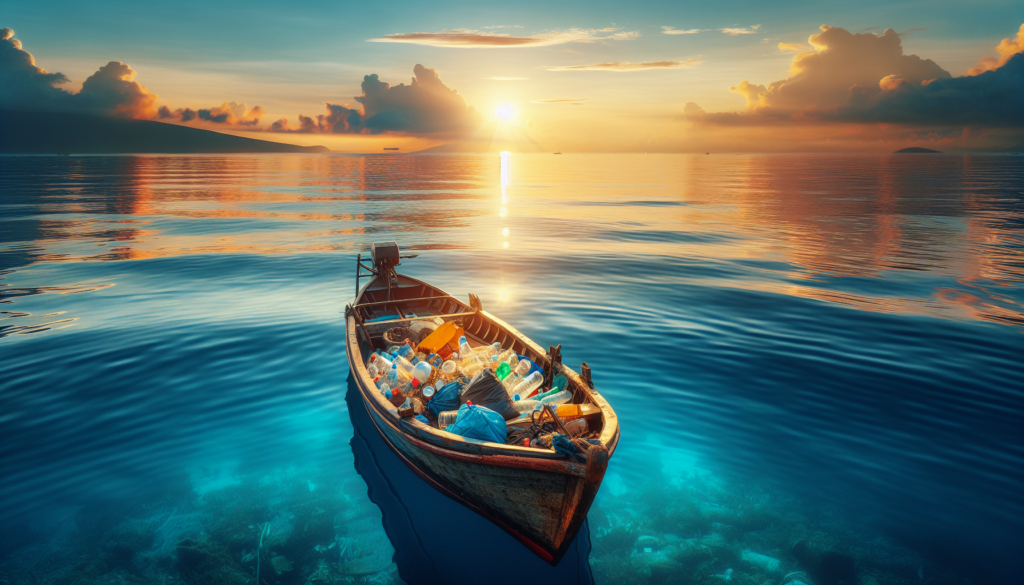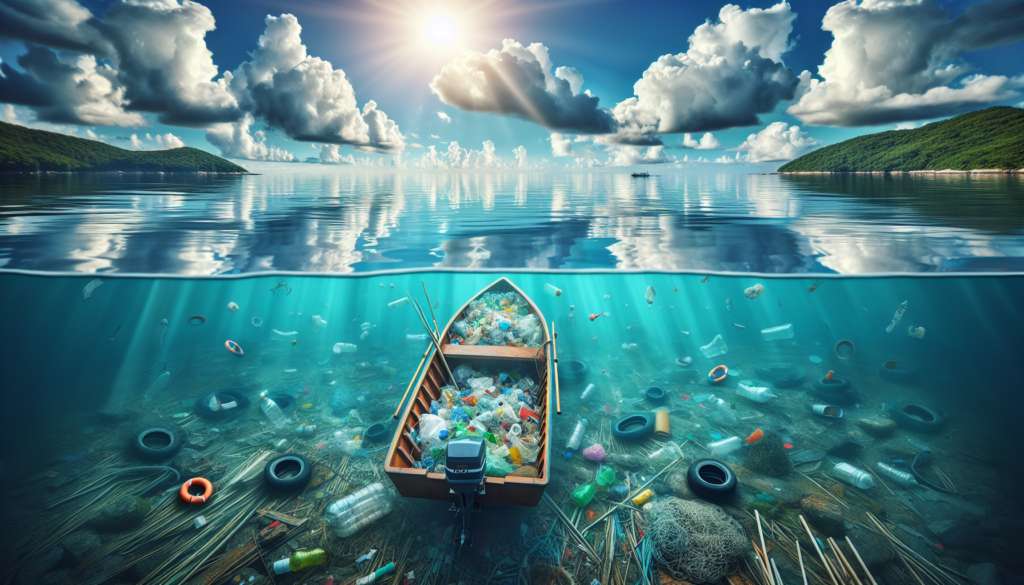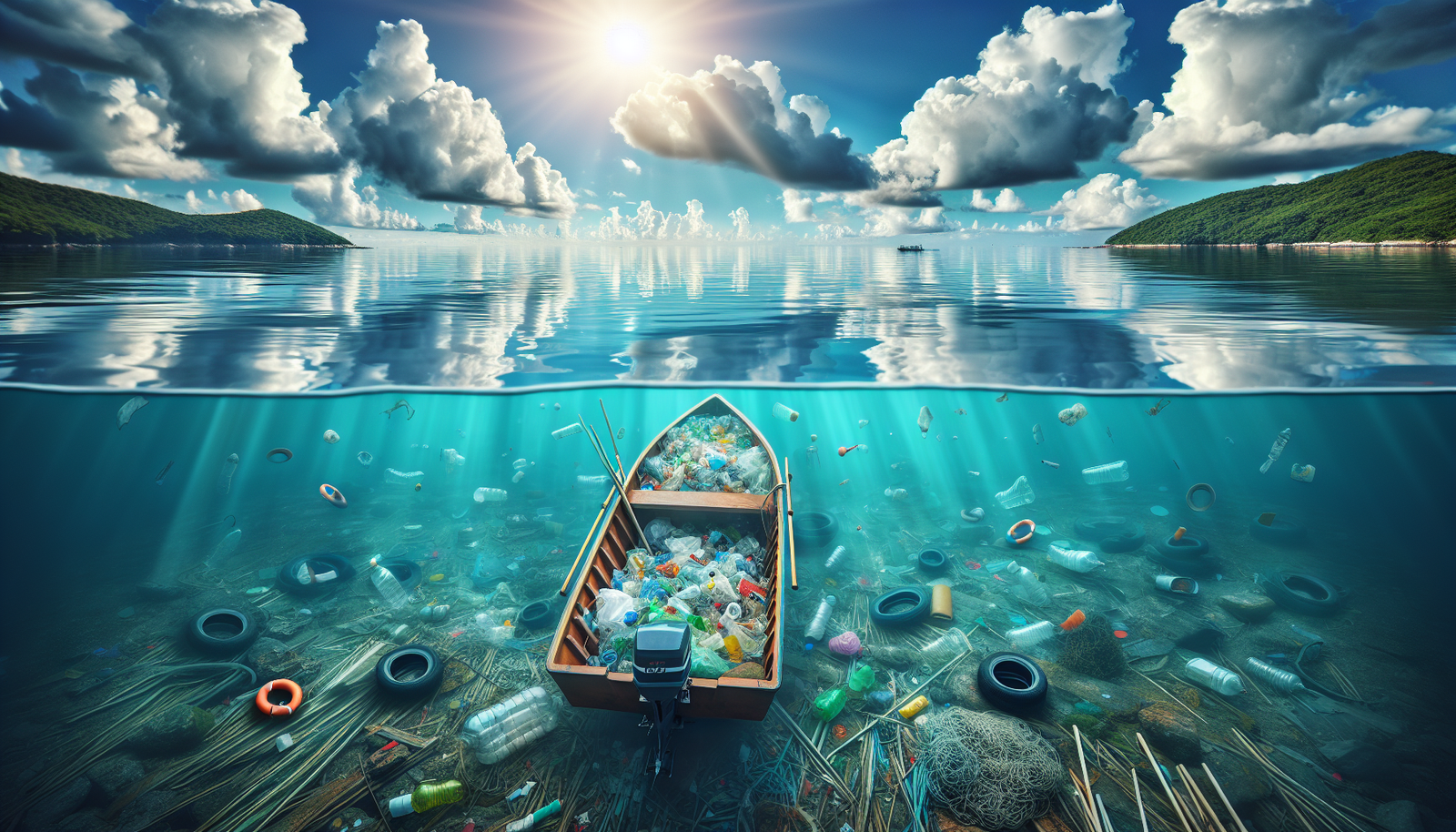Imagine the joy of cruising on your boat, feeling the cool sea breeze on a sunny afternoon. Suddenly, your tranquility is disrupted as you notice an alarming buildup of plastic trash floating in the water. Not an ideal sight for anyone, right? This brings us to focus on the pressing need for coastal cleanup and the significant role your boat could play in such initiatives. The article “The Role Of Boating In Coastal Cleanup Initiatives” will enlighten you on how your leisure rides can be transformed into impactful journeys towards sustaining our beautiful oceans. In the subsequent sections, you’ll learn about various boating methods and techniques to efficiently participate in coastal cleanup programs, turning your boating experiences much more rewarding.

Understanding Coastal Cleanup Initiatives
Definition of Coastal Cleanup initiatives
Coastal cleanup initiatives are focused efforts aimed at removing trash and debris from our shores and oceans. These initiatives can range from small localized community actions to major international events. The ultimate goal of these movements is to restore and preserve the health of our marine ecosystems by getting rid of pollutants, particularly plastic waste, that pose a severe threat to marine wildlife and the overall oceanic environment.
Importance of Coastal Cleanup Initiatives
Coastal cleanup initiatives are critical in maintaining the health and resilience of our oceans. You see, these cleanups remove countless tons of harmful waste from our seas every year, which can injure or kill marine life and damage habitats. Marine litter, particularly plastics, can persist in the environment for hundreds of years, causing ongoing damage. But besides the environmental benefits, these initiatives also help raise public awareness about the magnitude of marine pollution and the need to change our consumption and waste disposal behaviors.
Global Impacts of Coastal Cleanup Initiatives
The global impacts of coastal cleanup initiatives cannot be overstated. By cutting down the volume of waste in our oceans, they don’t just boost the health of marine fauna and flora; they also benefit human communities, especially those that depend on fishing and tourism. Clean oceans mean healthier fish stocks and more attractive beaches, boosting livelihoods in coastal areas. These initiatives also inspire policy changes and regulations at local, national, and international levels to prevent marine litter.
Why Boating is Crucial in Coastal Cleanups
Boating as a Tool for Coastal Cleanup
Boating is an indispensable tool for coastal cleanup initiatives. Not all marine litter ends up on beaches; a lot of it stays in the water. That’s where boats come in. They allow cleanup teams to reach litter hotspots that would otherwise be inaccessible, including remote shorelines, floating rubbish patches, and areas near the mouths of rivers where waste tends to accumulate.
Practical Benefits of Boating in Coastal Cleanup
Boats offer numerous practical benefits in coastal cleanups. For one, they can cover large areas swiftly and efficiently, making the cleanup process more time- and cost-effective. They also provide a way to collect garbage directly from the water’s surface, which is where a significant amount of marine litter is located. Lastly, boats equipped with special gear can even retrieve submerged waste, ensuring a more thorough cleanup.
Boating as a Medium for Widespread Coastal Cleanup
Boating also serves as a medium for more widespread coastal cleanups. With boats, coastal cleanup initiatives can reach farther and wider. This expanded reach, in turn, increases the impact and success rate of these initiatives, enabling them to restore larger areas of our oceans.
Different Types of Boats Used in Coastal Cleanup
Use of Powerboats in Coastal Cleanup
Powerboats are a common sight in coastal cleanup initiatives, mainly due to their speed and power. They can swiftly cover large stretches of water, making them ideal for widespread cleanups. Plus, their powerful engines can handle heavy loads, helping to collect and transport substantial amounts of waste in a single trip.
Advantages of Dinghies in Coastal Cleanup
Dinghies, with their small size and manoeuvrability, are another popular choice in coastal cleanups. They can navigate in shallow waters and tight spaces where larger vessels cannot, reaching litter-laden areas near the shore or between rocks. Some types of dinghies, such as those equipped with inflatable tubes, are also relatively light, making them easy to transport to different cleanup locations.
Role of Workboats in Coastal Cleanup
Workboats, known for their versatility and durability, play a crucial role in coastal cleanups. They can be equipped with various tools and equipment for collecting, storing, and sorting waste, making the cleanup process more efficient. These boats also have spacious decks and high load capacities, enabling them to carry large quantities of collected waste.

Community Boating Initiatives in Coastal Cleanup
Getting Local Communities Involved in Boating for Cleanups
Getting local communities involved in boating for cleanups is a fantastic way to increase the effectiveness of coastal cleanup initiatives. After all, locals usually have a good understanding of their surrounding marine environment, including the locations most affected by marine litter. Encouraging locals to participate in cleanup boat trips not only provides additional manpower but also fosters a stronger sense of ownership and responsibility for the health of their local coastal and marine areas.
Success Stories of Community Boating Initiatives
There have been numerous success stories of community boating initiatives for coastal cleanups. These stories typically involve communities coming together to remove several tons of waste from their local waters and coastlines using their boats. They serve as an inspiring testament to what can be achieved when communities rally around a common goal and take action to protect their local environment.
Challenges and Solutions in Community Boating Initiatives
Like any initiative, community boating for coastal cleanups can face challenges. These can include lack of sufficient boats or adequate waste handling facilities, safety concerns, and minimal participation due to lack of awareness or interest. However, many of these challenges can be addressed through effective planning, collaboration with local authorities, and continuous public education and engagement.
Volunteer Boating in Coastal Cleanup
Role of Volunteer Boaters in Coastal Cleanup
The role of volunteer boaters in coastal cleanup is monumental. Volunteers, with their boats, significantly contribute to the scale and success of cleanup operations, especially those organised on a volunteer basis or in areas with relatively little resources. As volunteers, they also play a significant role in raising awareness about marine pollution in their local communities and inspiring more people to join the cause.
How to Engage Volunteers in Boating for Cleanup
Engaging volunteers in boating for cleanup can be achieved through a variety of ways. Publicising cleanup events and campaigns through various channels, including traditional media and social platforms, helps reach a wider audience. Providing adequate training and ensuring safety measures are in place also make volunteering opportunities more appealing.
Influence of Volunteer Boating in Coastal Cleanup Success
The influence of volunteer boating on the success of coastal cleanup cannot be underestimated. Beyond the practical benefits of having more boats and helping hands on deck, volunteer boating promotes a sense of community among participants. This sense of camaraderie breeds enthusiasm and dedication, which not only boost the success of individual cleanups but also contribute to the sustainability of cleanup initiatives over time.
Environmental Impact of Boating for Coastal Cleanup
Benefits to Marine Life and Ecosystems
Boating for coastal cleanup offers many benefits to marine life and ecosystems. By removing harmful debris, these cleanup efforts help restore natural habitats and prevent injuries or deaths among marine animals. By reducing pollution, they also help create conditions for marine ecosystems to recover and thrive.
Potential Environmental Risks of Boating and How to Mitigate
While boating plays a significant role in coastal cleanups, it also has potential environmental risks, such as fuel and oil spills, noise and disturbance to wildlife, and anchoring damage to seafloor habitats. To mitigate these risks, boaters should follow best practices such as maintaining their boats properly to prevent leakages, operating their vessels at low speeds and as silently as possible near sensitive areas, and using environmentally-friendly anchors.
Boating’s Contribution to Sustainable Oceans
Despite the potential risks – which can be effectively managed – boating’s contribution to sustainable oceans is undeniable. Besides its fundamental role in physically removing waste from the ocean, boating for coastal cleanup also serves as a platform for environmental education and advocacy, inspiring more people to appreciate and protect our oceans.
Technological Advancements in Boating for Coastal Cleanup
Innovations in Boating Technology for Cleanup
Innovations in boating technology have become game-changers for coastal cleanup. These include special nets for efficient litter collection, advanced navigation and mapping systems for pinpointing pollution hotspots, and onboard waste processing and storage systems for managing collected waste effectively. Some boats nowadays even use renewable energies, reducing their own environmental footprint.
Importance of Technological Advancements in Efficiency
Technological advancements are critically important in improving the efficiency of cleanup operations. They help optimize boat routes, streamline waste collection and removal, and reduce the time and effort required to clean specific areas. All these make coastal cleanup operations more effective and impactful.
Future Prospects for Technological Development
Looking ahead, there are exciting prospects for further technological development in this field, with inventions being tested such as drones for remote litter detection and autonomous marine robots for cleanup operations. These innovative technologies have the potential to revolutionize boating for coastal cleanup, making our oceans cleaner and healthier.
Policies and Regulations Guiding Coastal Cleanup Boating
International and National Policies for Coastal Cleanup
There are several international and national policies guiding coastal cleanup boating. These include regulations on waste disposal at sea, the use of marine protected areas, and the safety standards for boating operations. Compliance with these policies is crucial to ensure that coastal cleanup activities are done legally and responsibly.
Importance of Consistent Policies for Coastal Cleanup Boats
Consistent policies for coastal cleanup boats are important to maintain a standardized approach across cleanup initiatives, enhancing their overall effectiveness and sustainability. They provide guidance on safe and responsible boating practices, enhance coordination among different cleanup operations, and help avoid potential legal issues.
Navigating Legal Challenges in Coastal Cleanup Boating
There can be legal challenges in coastal cleanup boating, such as navigating through protected marine areas or handling overseas waste. To successfully navigate these challenges, organizations should stay updated on relevant laws and regulations, liaise with local authorities and environmental agencies, and seek legal advice when needed.
Funding and Support for Boating in Coastal Cleanup
Sources of Funding and Support for Coastal Cleanup Boats
Funding and support for coastal cleanup boats come from various sources. These include government grants, corporate sponsorships, public donations, environmental funds, and in-kind services from local businesses and organizations. Volunteering also is a significant source of support, as it reduces the cost of manpower required for cleanups.
Role of Sponsorships and Partnerships in Coastal Cleanup Boating
Sponsorships and partnerships play a vital role in supporting coastal cleanup boating. Companies can sponsor boats, equipment, or entire cleanup events, while partnerships with environmental organizations or government agencies can provide access to resources, expertise, and advocacy support. These collaborations not only provide much-needed financial and logistical assistance but also amplify the impact of cleanups by combining strengths and resources.
Challenges in Securing Funding and Suggested Solutions
Securing funding for coastal cleanup boating can be challenging, given the scale of resources needed and competing societal needs. However, solutions can be found in diversifying funding sources, running creative fundraising campaigns, demonstrating the impact and benefits of cleanups to potential funders, and fostering long-term partnerships with committed supporters.
Evaluating the Success of Boating in Coastal Cleanup
Metrics for Measuring Success in Coastal Cleanup Boating
Measuring the success of boating in coastal cleanup can be done through various metrics. These include the amount of waste collected, the area covered, the number of volunteer hours, and the number of participating boats. Other qualitative metrics could include the level of public awareness raised and the number of policies influenced.
Case Studies of Successful Boating in Coastal Cleanup
There are many case studies of successful boating in coastal cleanup worldwide. These stories showcase how a combination of dedicated volunteers, well-coordinated operations, effective use of technology, and solid support from communities and partners can lead to impressive cleanup results, inspiring others to embark on similar efforts.
Improving the Impact of Boating in Coastal Cleanups
To improve the impact of boating in coastal cleanups, we should focus on continuously enhancing the efficiency of cleanup operations, increasing volunteer engagement, advancing boat technology and equipment, expanding partnerships and funding sources, and further promoting public awareness and policy advocacy. After all, every bit helps, and together, we can give our oceans the cleanup they desperately need.

